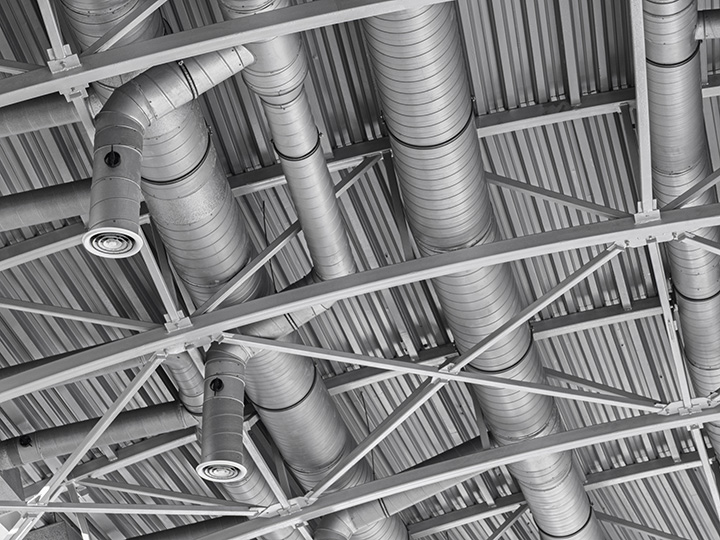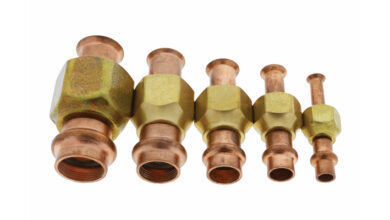 The quality of the air inside offices, schools, casinos/resorts and other highly populated areas is important not only for comfort, but also for health. And if it wasn’t top of mind before, it has become essential in recent years.
The quality of the air inside offices, schools, casinos/resorts and other highly populated areas is important not only for comfort, but also for health. And if it wasn’t top of mind before, it has become essential in recent years.
Indoor air quality in schools has been a major concern among researchers as children are more susceptible to air pollutants than adults and spend a significant amount of time in schools. IAQ in office buildings is also top of mind as it can significantly affect productivity. In both cases, poor IAQ can lead to symptoms such as headaches, fatigue, trouble concentrating and irritation of the eyes, nose, throat and lungs. Air pollutants can also cause long and short-term health problems including allergic reactions, worsened asthma and/or other respiratory illnesses.
Temperature and humidity that is too high or too low can also impact IAQ by enabling viral transmission. Indoor air problems can also be subtle and do not always produce easily recognized impacts on health, well-being or the physical environment.
According to the American Lung Association’s Indoor Air Quality in Schools Guide, high carbon dioxide levels and poor ventilation, which plague many school buildings, can negatively affect concentration, cognitive ability and test scores. Poor air quality also affects teachers and staff, resulting in reduced focus, fatigue and increased sick leave. A 2020 national survey of school districts from the U.S. Government Accountability Office showed about half (an estimated 54%) of public schools need to update or replace multiple building systems or features in their schools.
Office workers dealing with poor indoor air quality experience the same effects and the issue is also not uncommon. A 2022 survey by Fellowes Brands found only 36% of its 1,120 U.S. adult respondents – those employed full-time or part-time and who work at least part of the time indoors at their employer’s location – described the indoor air at their workplace as very clean.
Casinos also pay special attention to IAQ. Their HVAC systems present a unique set of challenges with their high occupancy, tobacco smoke filtration and ventilation, and multiple floors and rooms. Casino ventilation rates are typically adjusted based on CO2 levels as an indicator of area occupancy, as well as by measuring volatile organic compounds to indicate tobacco smoke levels.
It’s important to test and measure IAQ and the building’s systems, which includes air handlers, dampers, ductwork, computer controls and the overall design of each system to make the necessary corrections.
No matter the building type, those skilled in the management of IAQ have a great responsibility to ensure the well-being of building occupants. Effective monitoring and execution of IAQ must include:
- Control of airborne pollutants, which includes managing the source of any potential contaminants such as exhaust fumes, garbage or cleaning chemicals, to reduce entry into the ductwork
- Introducing and distributing adequate outdoor air
- Maintaining acceptable temperature and relative humidity
- Proper maintenance of HVAC systems
- Installing and regularly replacing filters (high efficiency, if possible)
- Air cleaning and ductwork cleaning
Mechanical HVAC systems are one of the best tools to create proper IAQ. An HVAC system that allows controlled ventilation — or upgrading to a system that allows this control — offers the ability to determine how much fresh outdoor air will be introduced into a space. While the unit brings clean air into the building, the system also pushes poor, contaminated air outside.
A building automation system plays a critical role in assuring continuous good air quality. Building operators can precisely set conditions in different zones and can closely monitor conditions in all areas.
As HVAC professionals, we also know the close connection between indoor air quality, efficiency and preventive maintenance. Preventive maintenance plans are a key element to ensure HVAC systems are working properly. Plans should include proactive measures to improve energy efficiency, while safeguarding indoor air quality. Energy efficiency retrofits can also be incorporated along with other building upgrade projects.
As mentioned, good ventilation is key to proper IAQ as it reduces the number of particles floating in the air. CO2 control is very important, as is CO2 monitoring, which can provide information on the quality of the air inside an office, classroom or other enclosed spaces. Having a constant check on indoor CO2 concentrations will help determine what adjustments may be needed with the outside air intake.
In schools, for instance, a target benchmark for good ventilation is CO2 readings below 800 ppm. In this environment, there are a variety of ways to increase ventilation to ensure proper CO2 levels. This includes: Opening outdoor air dampers beyond minimum settings to reduce or eliminate HVAC air recirculation (weather dependent), opening windows and doors, rebalancing or adjusting HVAC systems to increase total airflow to occupied spaces, and during occupied hours, turning off any demand-controlled ventilation controls that reduce air supply based on occupancy or temperature. Be sure to take into account any outdoor air pollutants, such as running buses or loading docks.
In addition to contributing to a healthy environment, IAQ preventive maintenance benefits include:
- Reduction in energy and operating costs
- Fewer emergency repairs, which frees up monetary and other resources
- Flexible maintenance schedules
- Early detection of minor problems, which reduces untimely equipment breakdowns
- Efficient and operational equipment
As high-occupancy buildings continue to look for ways to lower energy use, technology advancements can play a major role in building operations as sensors, controls and data can drive further efficiencies. With technology such as Telemetry, buildings can be monitored and managed from a distance, which can aid in adjusting occupancy schedules and temperatures, as well as in finding equipment faults, optimizing functionality and promoting better and easier decision-making for owners.
Remember, maintaining proper indoor air is more than a quality issue; it embodies the safety and stewardship of students, staff, employers and their employees, patrons and facilities.
Johnny Lunden and Jim Miracle are project sales representatives at Harris.



